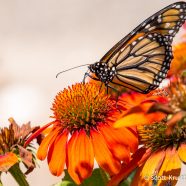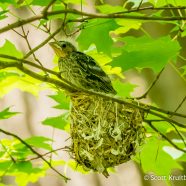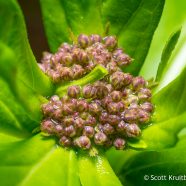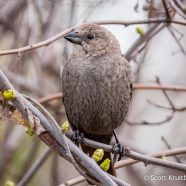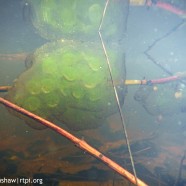Monarch on Coneflower
This Monarch butterfly (Danaus plexippus) certainly chose the correct color of coneflower to nectar on as photographed yesterday. It is now egg and caterpillar season! Have you found any on your milkweed?
Read MoreBrown-headed Cowbird Nestling
This spring and summer seem to have been very successful for the Brown-headed Cowbird. I realize that this is largely anecdotal, but I have had and heard a lot of sightings and stories about various species discovered feeding a hatchling or fledgling Cowbird. From the American Redstart to the Chipping Sparrow, the Yellow-throated Vireo or the Yellow Warbler, an Orchard Oriole and a Common Yellowthroat, a Blue-winged Warbler or this nest that I found and photographed a couple of weeks ago, it has been Cowbirds here, there, and everywhere. What’s the common thread? All of these birds and...
Read MoreSwamp Milkweed
The Swamp Milkweed (Asclepias incarnata) is on the way! These wonderfully helpful pollinator plants, beloved by the Monarch butterfly for feeding and egg laying, will be blooming soon enough. I am looking forward to seeing all sorts of butterflies and other insects enjoying the nectar this summer. Have you planted any beneficial and native pollinator plants in your yard? What are you hoping to spot feeding on them? Go see what you can find this weekend in the great outdoors… Scott Kruitbosch Conservation & Outreach Coordinator
Read MoreBrown-headed Cowbirds
We seem to be at the peak season of reports of, “Why is this pretty bird feeding this huge baby bird that is twice its size?!” all thanks to the native Brown-headed Cowbird (Molothrus ater). Here we have a photo of a male followed by a female. The species is a brood parasite with the female laying eggs in nests of other birds to leave the burden of raising young to these unsuspecting parents by fooling them into thinking it is their own egg. It is also a rather clever way of not putting all of your eggs in one basket. These blackbirds are found in typical types of blackbird...
Read MoreBouncing Babies
Here we have some bouncing baby…umm, boys and girls I would guess. These spotted salamander (Ambystoma maculatum) babies will soon be hatching from their globular masses and become veracious predators in the little vernal pools in which they temporarily reside. As they feed and grow, they will be racing against the clock in order to develop from free swimming legless tadpoles into four legged land dwellers before their nursery pool dries out towards the end of the summer. Talk about rapid development! Elyse Henshaw Conservation Technician
Read More



